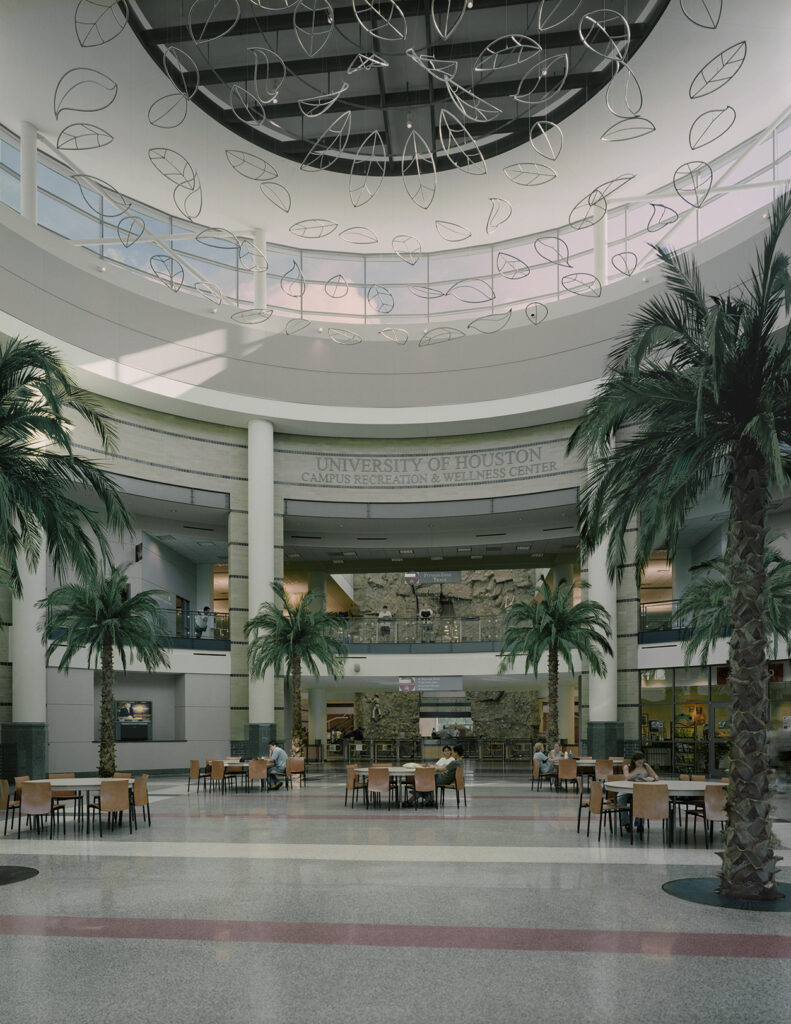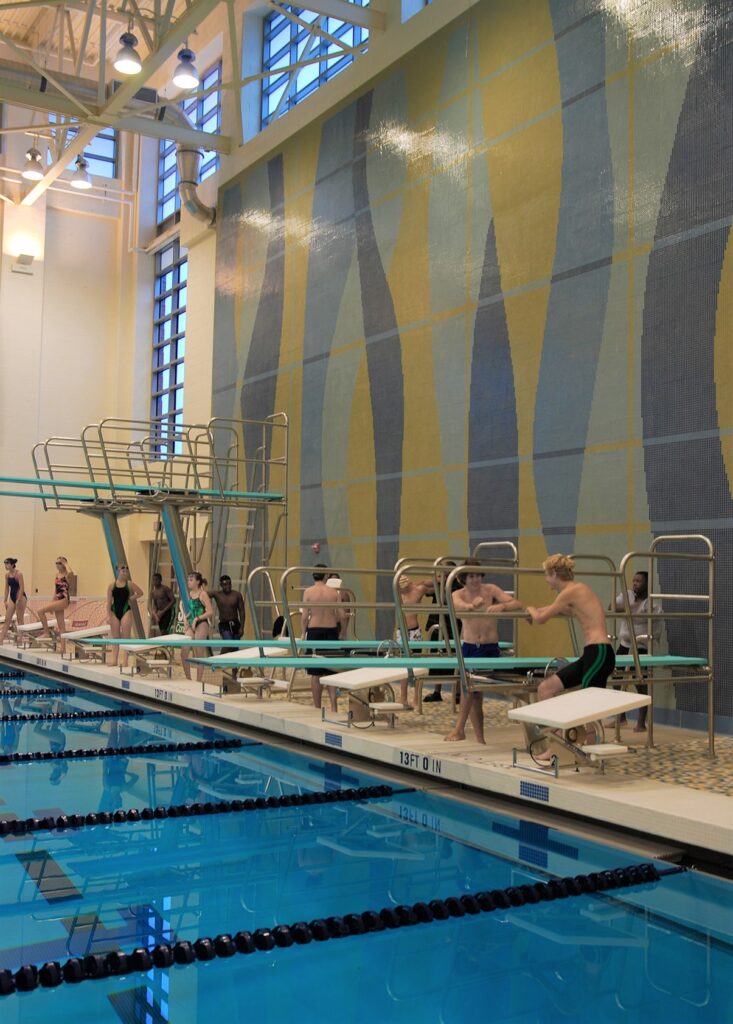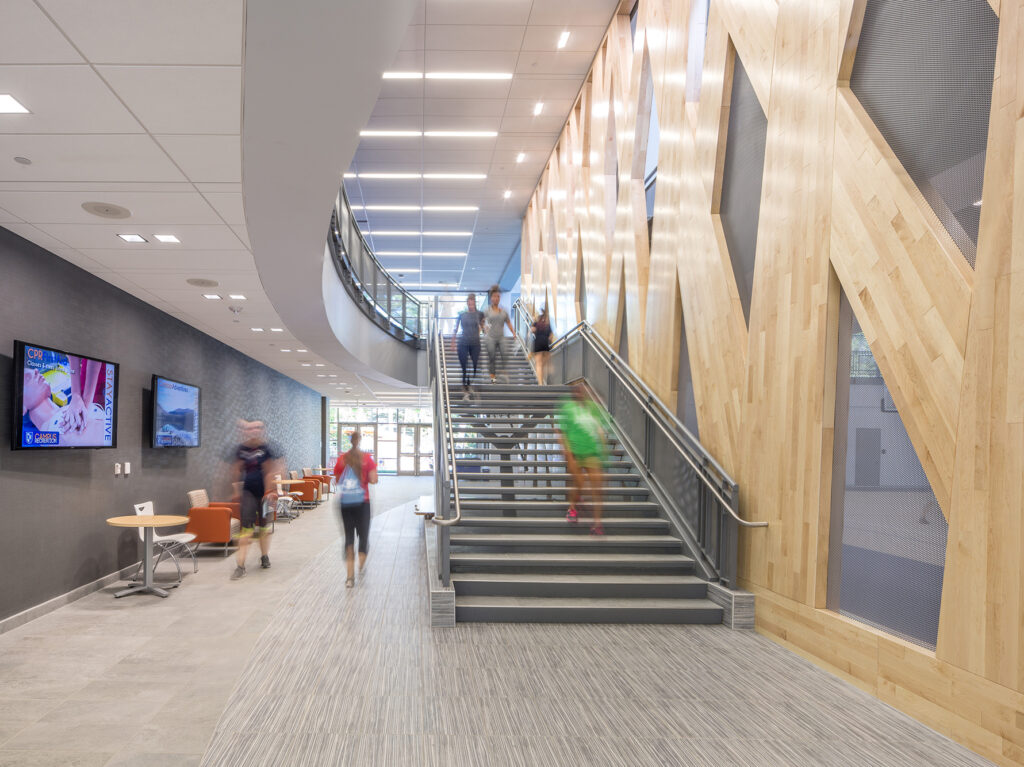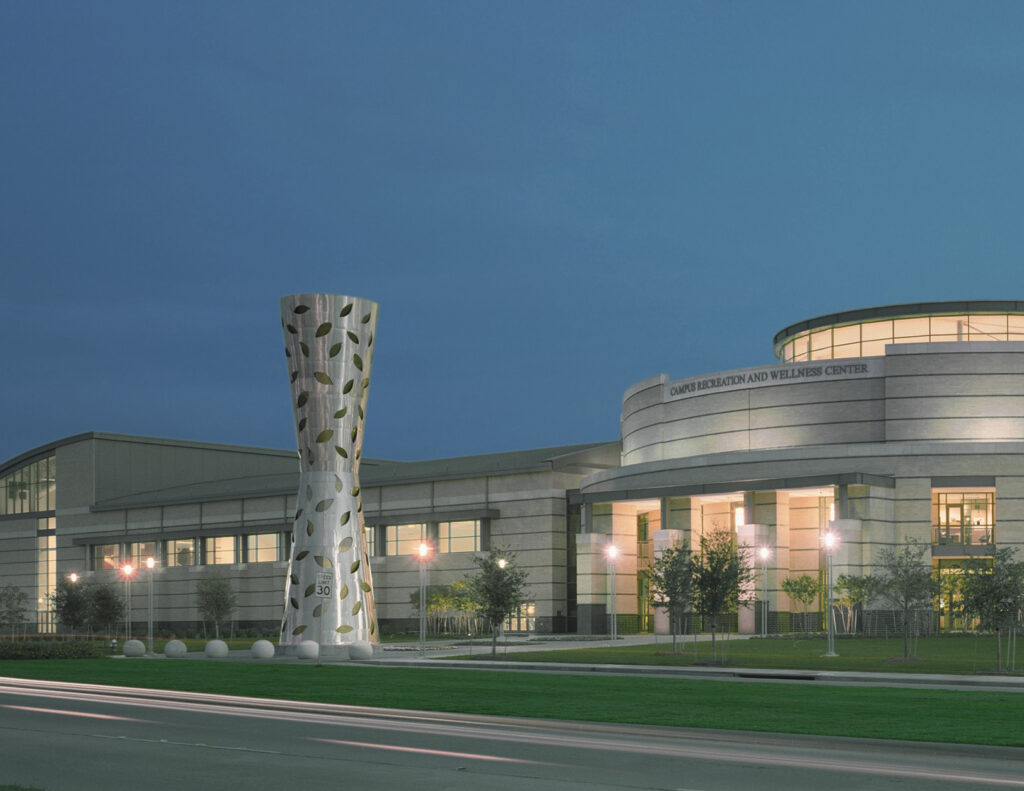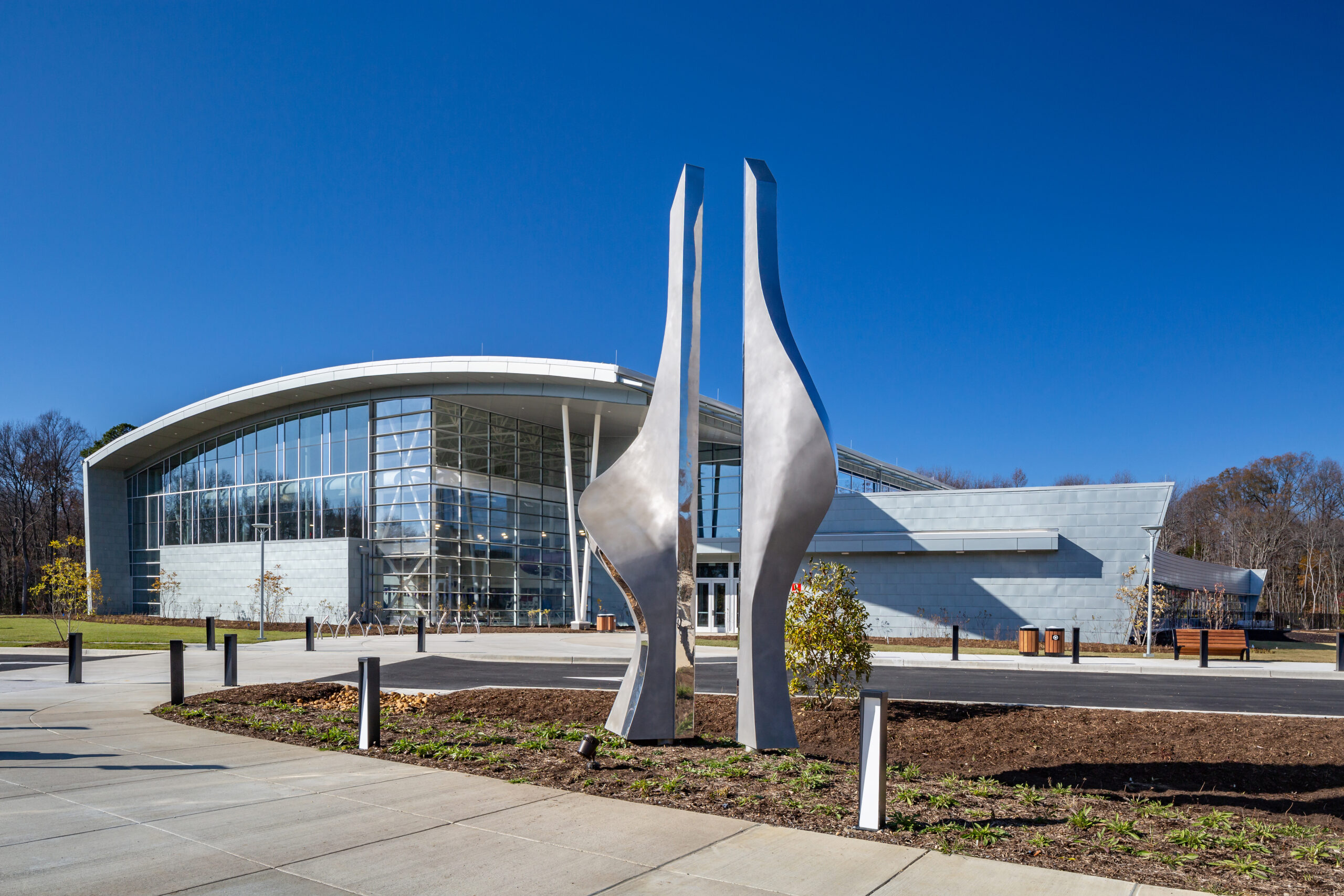
by Eliel Alfon, AIA | Design Principal, Hughes Group Architects
Throughout history, architecture and art have been an integrated process. They have always been a communication tool for most civilized cultures. In a way, this allowed a building or structure to have deeper meaning beyond its intended function and purpose. Public art is cultural expression. Introduction of art in a public setting not only enriches the quality of the space, but it can reflect the soul of the community.
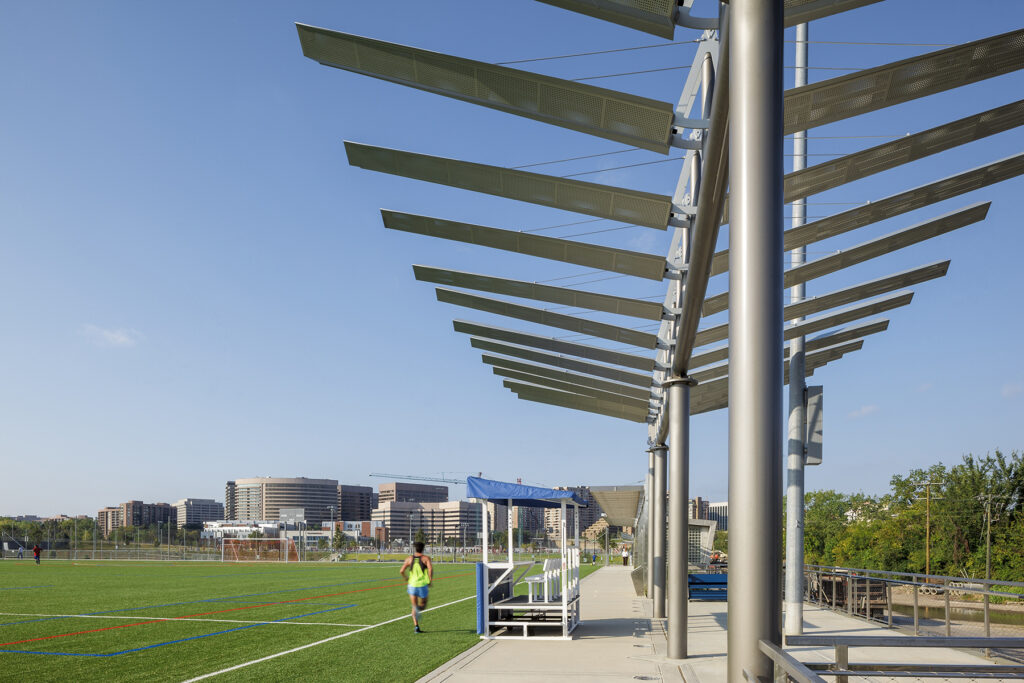
Over the years, Hughes Group Architects has tried to take the opportunity of integrating art into the design of public facilities. Fortunately, some of the public building projects have a public art budget, such as the University of Houston-Campus Recreation & Wellness Center and the Long Bridge Park in Arlington, Virginia. For projects that do not have an art budget allocated, we identify feature areas in the building like a tile mural or accent wall that enhance the design quality of the facility. Examples are the “Forest Wall” at the University of New Hampshire’s Hamel Recreation Center and the “Wave” tile mural at Wilson Aquatic Center in Washington, D.C.
The Southern Area Aquatic and Recreation Complex, known as SAARC, is a 78,000-sf multigenerational facility in Brandywine, Maryland. Program spaces include community/multipurpose rooms, aquatic center, 2-court gymnasium, fitness and weights area, elevated track, and support spaces. The project site is located on early 1900s farmland in Prince George’s County which became forested over the years. Our client was the Maryland-National Capital Parks/Planning Commission (M-NCPPC)-Prince George’s Department of Parks/Recreation. Our firm, as the architect/designer, worked with Coakley Williams Construction, on the design-build team.
The building design focuses on the relationship of the spaces and the site. The building layout allows strong visual connection to the surrounding forest especially the 175-year-old willow oak specimen tree. The central atrium acts as a circulation spine with access to the community spaces and the high-volume recreation spaces. The “branch” steel columns marching from the entry and into the atrium echo the forest surrounding the site.
After the schematic design was completed, we started our search and solicitation of local artists in the D.C. metropolitan area. The art budget was 1% of the project construction cost. Working with M-NCPPC’s Arts and Cultural Heritage Division, we developed the criteria for the selection and evaluation of the artists. We identified three possible areas in the project: one outdoor and two indoor locations. We also stated three clear premises that the artist should focus on their proposal submission — community, health/wellness, and site/nature. Nearly twenty artists with their proposals were interviewed during the selection process. We selected three artists for the project and each was given a budget to work with to finalize their proposals.
The outdoor piece was awarded to Judy Sutton Moore for the “Guardian.” The 22-foot-high stainless-steel sculpture was placed between the building and parking transition. This sculpture was inspired by the 150-year-old willow oak tree in the site. The sculpture was fabricated in Pennsylvania. At the entry lobby, Heidi Lippman was commissioned to work on her 12-foot high by 20-foot-wide mosaic titled “Waters Promise.” The cut glass mosaic of different colors, textures and sizes was Heidi’s interpretation of health and wellness using the forest as a metaphor. Glass mosaic was purposely used so one can see their reflection and become part of the forest mosaic. The mosaic panels were fabricated in Germany. The hanging sculptures at the central atrium was awarded to Martha Jackson Jarvis. Martha’s “Family Tree/Community Circle” aluminum hanging sculptures celebrated the family as a building block of a community. The aluminum sculptures were fabricated in the artist’s studio in Maryland.
Prior to fabrication of the art pieces, each artist was required to submit shop drawings. We assisted in the coordination with our consulting team for special lighting requirements or structural load capacities and made some adjustments to the building details to accommodate the artwork. We visited the fabrication shop and required production photo updates prior to any installation. During installation, each artist, together with the design team, made final location adjustments to make art pieces work better in the designated space. Interviews with the artists, the fabrication and installation of the art pieces were all documented. Additional information on the art pieces can be access by the community using the information digital display kiosks in the atrium.
The lessons from the art integration process at SAARC are the following:
- Establish the art budget;
- Establish criteria and identify location(s);
- Guide artists but allow them to express themselves;
- Integrate the artist(s) early in the project; and
- Stay involved throughout the whole process.
The integration of art at SAARC enhances the building’s purpose, adds cultural meaning to the place and value to community. Art in public buildings can serve a higher mission in bringing our diverse communities together.

